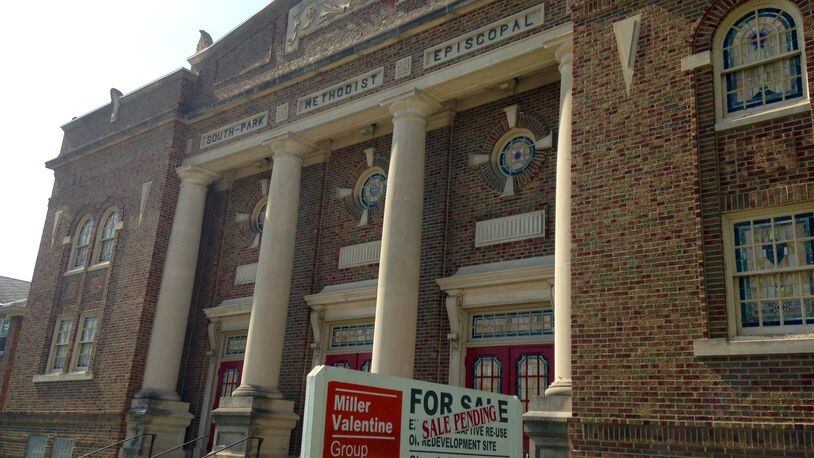Local residents and UD officials said they do not want to see student housing developments creep into areas west of Brown Street because such projects threaten to erode the character of existing neighborhoods.
Bucaro said the university has worked hard to prevent student housing, especially for undergraduates, from crossing into the neighborhoods west of Brown Street.
“Frankly, we would rather not have students on that side of the street at all,” he said.
Grady Larkins, president of the Rubicon Mill Neighborhood Association, said the group is “willing to defend our neighborhood.”
“We can’t object to (a project) that doesn’t yet exist in specific terms, but we want our principles to be known,” he said.
The church is zoned “mature neighborhood commercial,” according to the city of Dayton.
Sale pending
The church building has a long history, dating to 1926 when it opened as Patterson Memorial Presbyterian Church — named after NCR founder John Patterson. It became a United Methodist Church in 1968, and in 1995 it merged with Oak Street UMC.
A “sale pending” notice is posted on the Miller Valentine reality services sign in front of the church.
The Rev. Tom Miller would not discuss the sale of the 48,000-square-foot structure but did say the building has become a hindrance to the church’s ministry.
“We were spending more and more energy, physical and monetary,” Miller said. “We decided we were going to put our energy into missions and ministry and not into mortar.”
The building is owned by the West Ohio Conference of the United Methodist Church, with the local congregation holding the building in a trust.
The church’s sanctuary can seat about 450 people, Miller said. The education wing, built in the 1950s, once housed Sunday school classes and administrative offices, and the church used to be home to a preschool and food pantry.
Miller said the church will relocate.
Stable neighborhood
The Rubicon Mill neighborhood is a small area bordered by Brown Street to the east and Main Street to the west. Caldwell Street is the northern border, and to the south it essentially abuts Oakwood’s boundary line.
The vast majority of homes are owner-occupied, though more UD students have moved into the neighborhood, usually when their parents buy them a place to live while attending school, said Larkins. A few homes next to the church are occupied by students.
The neighborhood is about 98 percent occupied, and rarely does a house come up for sale, Larkins said.
In a statement, UD said it “greatly values the character and stability of our adjacent neighborhoods as well as long-standing relationships with our neighbors.”
One of UD’s strengths, it says, is that it is surrounded by strong neighborhoods, and Rubicon Mills would be weakened if it became more student-oriented, Bucaro said.
Converting the church into housing for students could require the owners to buy and demolish some other properties to make room for parking, because the site currently has about 23 spots, he said.
A large apartment project could also increase the neighborhood’s density by 50 or 60 percent, Larkins said, adding that he objects to high-density commercial uses of the property if they require a drive-through lane.
He fears that those types of projects could lead to traffic headaches and greatly tighten the supply of on-street parking.
Larkins said he has no objections to restaurants or quick-service eating establishments such as Milano’s, moving in.
Ken Clarkston, president of the Rubicon Park Business Association, said Rubicon Mill is a unique community that should be protected from any encroachment by student housing.
“We want to maintain the community integrity there,” he said.
